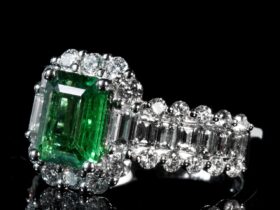If your work or environment requires personal protective equipment, and you wear glasses, then regular safety goggles probably aren’t cutting it. You need clear vision and full protection — and that means prescription PPE glasses that are up to the job. But not all options are created equal. Some fog up too easily. Others don’t offer enough coverage. And if they don’t fit well? That’s a distraction you don’t need when you’re trying to focus.
So, how do you pick the right pair?
There are several factors that go into choosing prescription PPE glasses that actually work for you. Whether you’re wearing them all day on the job or for a specific task that demands full protection, here’s what to keep in mind.
Understand the Standards That Matter
Not every pair of glasses labeled “protective” actually meets safety standards. In fact, a lot of generic options may not be compliant at all. So, before you get into frame styles or lens features, check whether the glasses meet required safety certifications.
Impact resistance
This is a must. Make sure the lenses and frames are tested against high-impact standards, not just basic coverage.
Coverage
Look for wraparound or extended side shields that protect against debris, splashes, or sparks from all angles.
Chemical protection
If you’re working with hazardous liquids or gases, you’ll need lenses and frames designed to block or deflect splashes.
Don’t assume anything. Always confirm that the glasses meet or exceed industry standards for your specific work or use case.
Comfort Isn’t Optional
You may not think comfort should be a top priority when it comes to safety gear, but it absolutely is. If your glasses are uncomfortable, you’re less likely to wear them consistently. Even small irritations can lead to major problems when you’re wearing them for hours at a time.
Look for:
- Adjustable nose pads that let you customize the fit without slipping.
- Lightweight materials that don’t press down on your face.
- Flexible arms that sit securely without pinching your head or ears.
The right pair should feel snug but not tight. You shouldn’t have to constantly adjust them, and they should stay in place even when you’re moving around or sweating.
Get the Right Lens Type for the Job
Prescription safety glasses can be made with a range of lenses, so you don’t need to compromise on clarity or visual sharpness. The key is to think about how and where you’ll be using them.
Single vision lenses work well if you just need correction for distance or reading. They’re often used in general work environments where basic protection and visibility are enough.
Bifocal or progressive lenses are helpful if you need to switch focus between distances. These are often used in technical or industrial fields where you’re moving between close-up and faraway work.
Photochromic or tinted lenses may help in outdoor environments with bright light or glare, though they may not be suitable in every setting.
It’s worth discussing your specific vision needs with a qualified optician, especially if you’re ordering prescription lenses with added coatings or features. Anti-fog and scratch-resistant coatings can be useful in high-demand environments, but only if they’re high quality and applied correctly.
Fit and Seal Matter More Than You Think
Prescription PPE glasses should fit your face shape well. If the seal around the eyes is loose, that’s a risk. It may seem like a minor detail, but small gaps around the lenses or sides can let in particles, dust, or vapor, defeating the entire purpose of wearing protective eyewear.
If you’re in an environment with airborne particles, a close fit is essential. You might need foam-lined inserts, a better face-hugging shape, or wider coverage lenses. Some designs offer soft interior edges for a better seal without discomfort. Wrap around prescription safety glasses are often a good choice if you want protection from both the front and sides without needing additional accessories.
Don’t Ignore Durability
You want your glasses to last. Even in tough conditions. That means looking beyond how they look or feel in the moment and focusing on construction and materials.
Polycarbonate lenses
These are lightweight, strong, and impact-resistant. Ideal for most safety glasses.
Scratch resistance
Not all coatings are equal. Look for lenses that stand up to regular use without becoming foggy or scratched after a few weeks.
Hinge quality
Cheap hinges are a common failure point. Go for frames with strong, flexible hinges that can take repeated use.
Durability also includes how well the glasses hold up to cleaning. If the lenses degrade from basic cleaning solutions, that’s a problem. Make sure the materials are compatible with whatever disinfectants or wipes you regularly use.
Style Might Be More Important Than You Think
This might sound superficial, but if you feel good wearing your safety glasses, you’re more likely to keep them on. And that matters especially if you’re in a work culture where people skip PPE because it feels awkward or bulky.
There are many designs now that don’t look like traditional safety glasses. That means you can get protection without the oversized, clunky look. Smaller frame profiles, sleek lines, and modern lens shapes can all help.
And remember, style doesn’t have to mean less protection. You can absolutely find glasses that look better and still meet every safety requirement.
What to Double-Check Before You Buy
Before finalizing your choice, here are a few quick checks to avoid common mistakes:
- Prescription accuracy – Make sure the lenses are made to your exact prescription. Small errors can lead to eye strain or make the glasses unusable.
- Return or fit policies – If possible, choose an option that allows adjustments or returns in case the fit isn’t quite right.
- Field of vision – Put the glasses on and move your head around. You should still have clear vision at the edges. Narrow lenses can create blind spots.
- Compatibility with other gear – If you wear helmets, masks, or respirators, make sure your glasses fit comfortably with the rest of your equipment.
A Final Thought Before You Choose
The right pair of prescription PPE glasses isn’t just about safety. It’s about making sure you can do your job well, without distraction, discomfort, or risk. A poorly chosen pair might protect your eyes in theory, but if you’re constantly taking them off, adjusting them, or struggling to see clearly, they’re not doing their job.
Take your time. Think about what matters most for your work environment, your vision, and your comfort. When all of those line up, your prescription safety glasses become something you actually rely on, not just something you’re required to wear.







